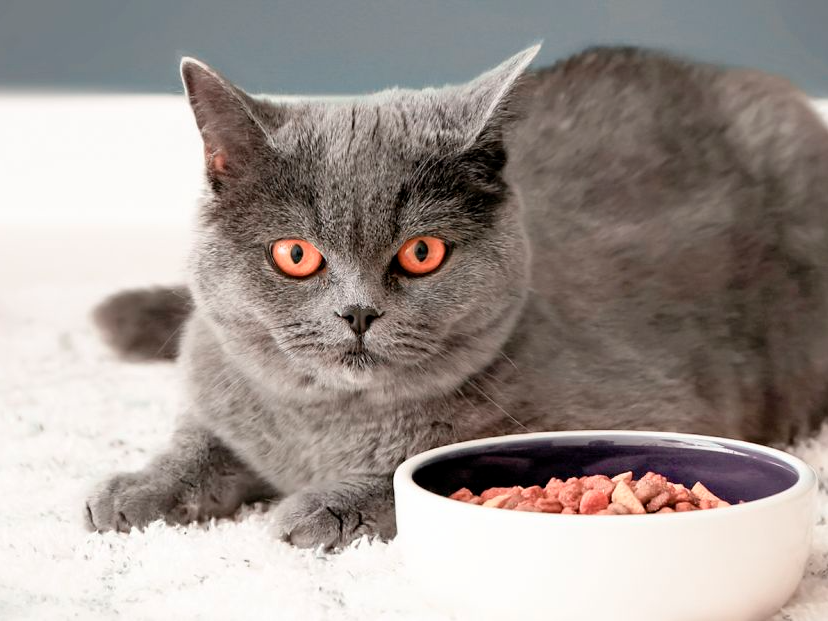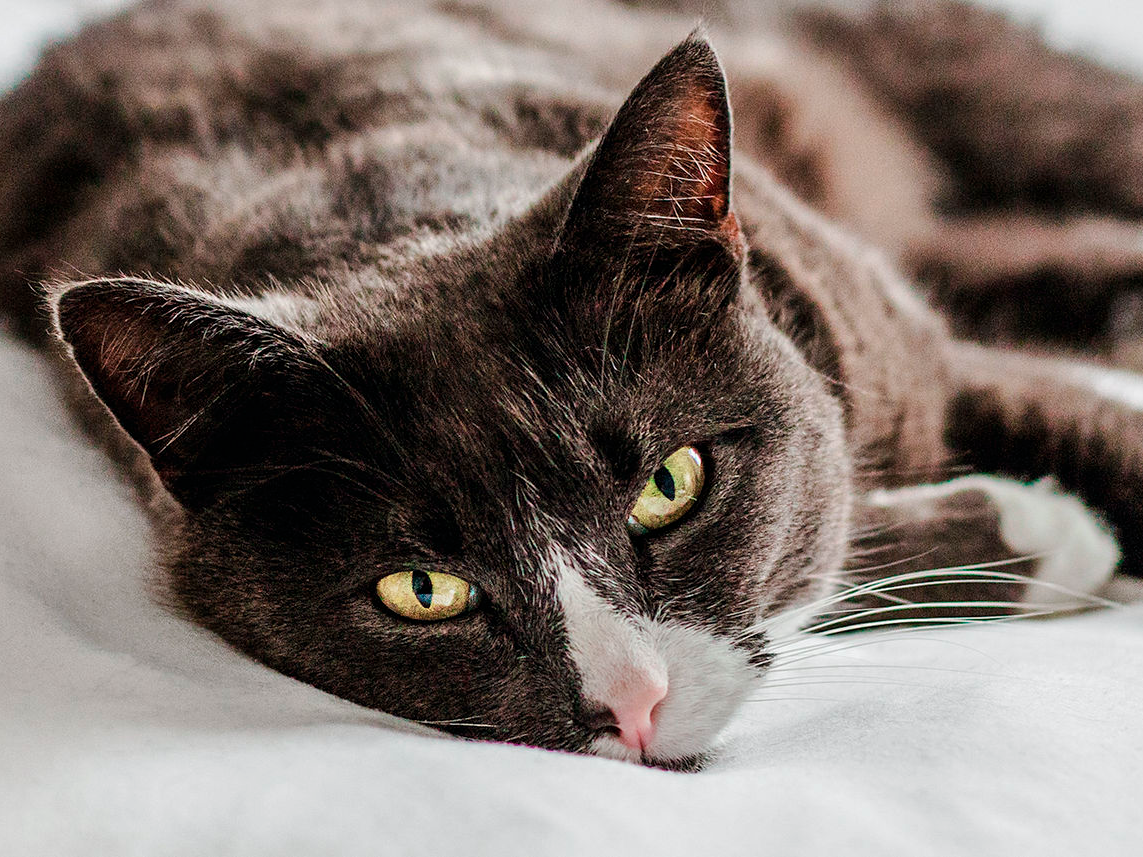When should you switch from kitten to adult cat food?
When you bring your new kitten or cat home with you they will need some time to settle into their unknown surroundings. Making things as cosy and comfortable as possible for them will help make this a smooth transition.
You’ll also want to have prepared for your kitten or adult cat’s nutritional requirements. At each of the kitten stages–-and throughout their lives—their diet will play a key role in helping them to develop and mature into a strong adult cat.
In this article, we'll break down when kittens become adult cats, the main differences between kitten and adult cat food, and the importance of this nutritional milestone.
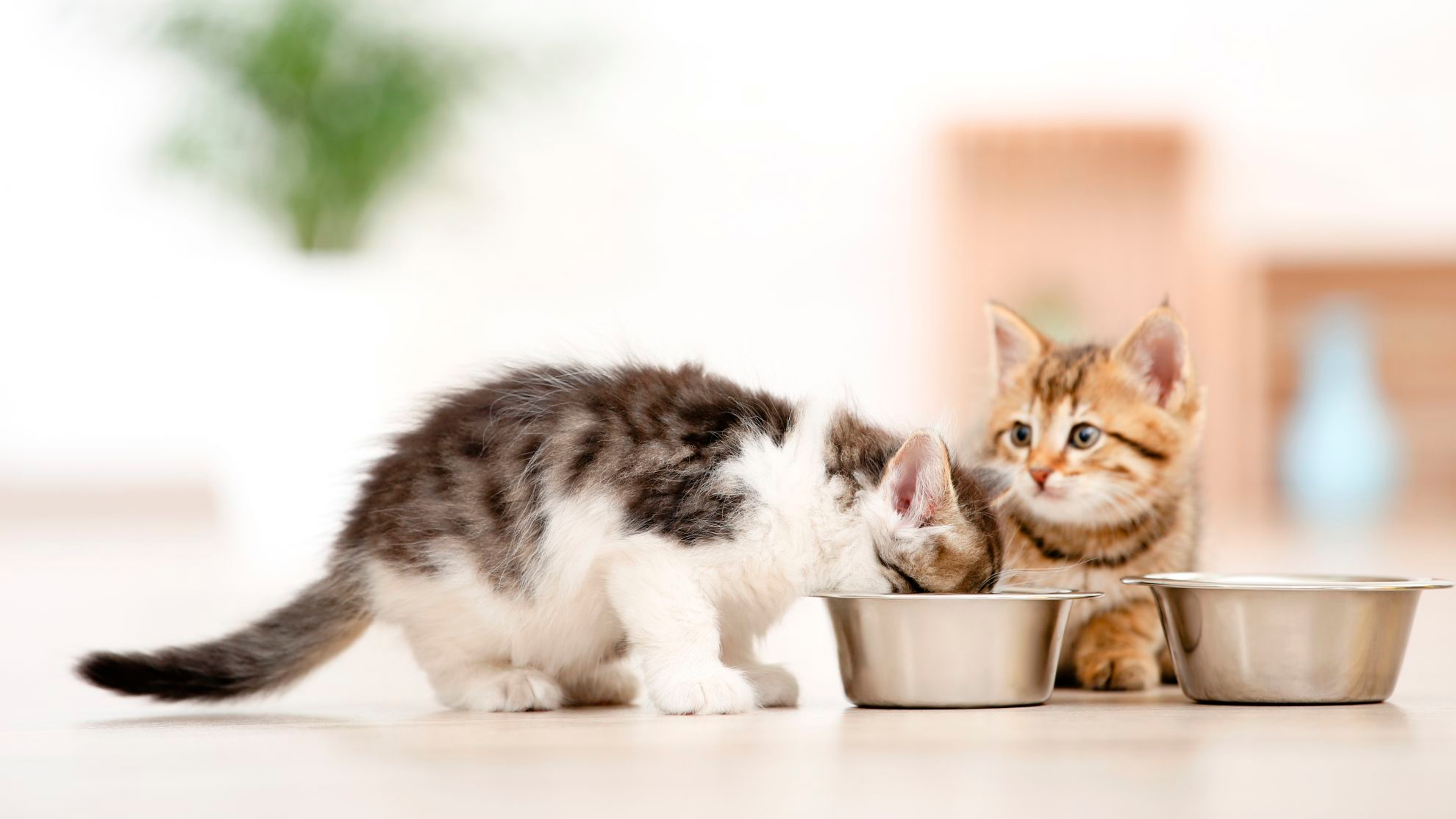
When to transition from kitten food to adult food
A kitten has different nutritional needs than an adult cat. To ensure the healthy development of your new kitten, you will need to feed them age-appropriate food.
There are two significant kitten stages to be aware of:
- Birth to four months: a period of intense growth where they’re also starting to build up immunity
- Four to twelve months*: growth rate and energy levels start to decrease but an easy-to-digest diet is still required
*One breed exception, being the Maine Coon, who generally take up to 15 months to complete their growth rate.
Kittens therefore need a diet that is:
- high in energy
- high in digestible protein
- contains nutrients that support the immune system
- contains an optimal mix of vitamins and minerals
Most kittens will start to eat adult cat food around the 10-12 month mark, with the exception of the Maine Coon who takes up to 15 months. This is when they are considered to be mature, as they have reached at least 90% of their full size.
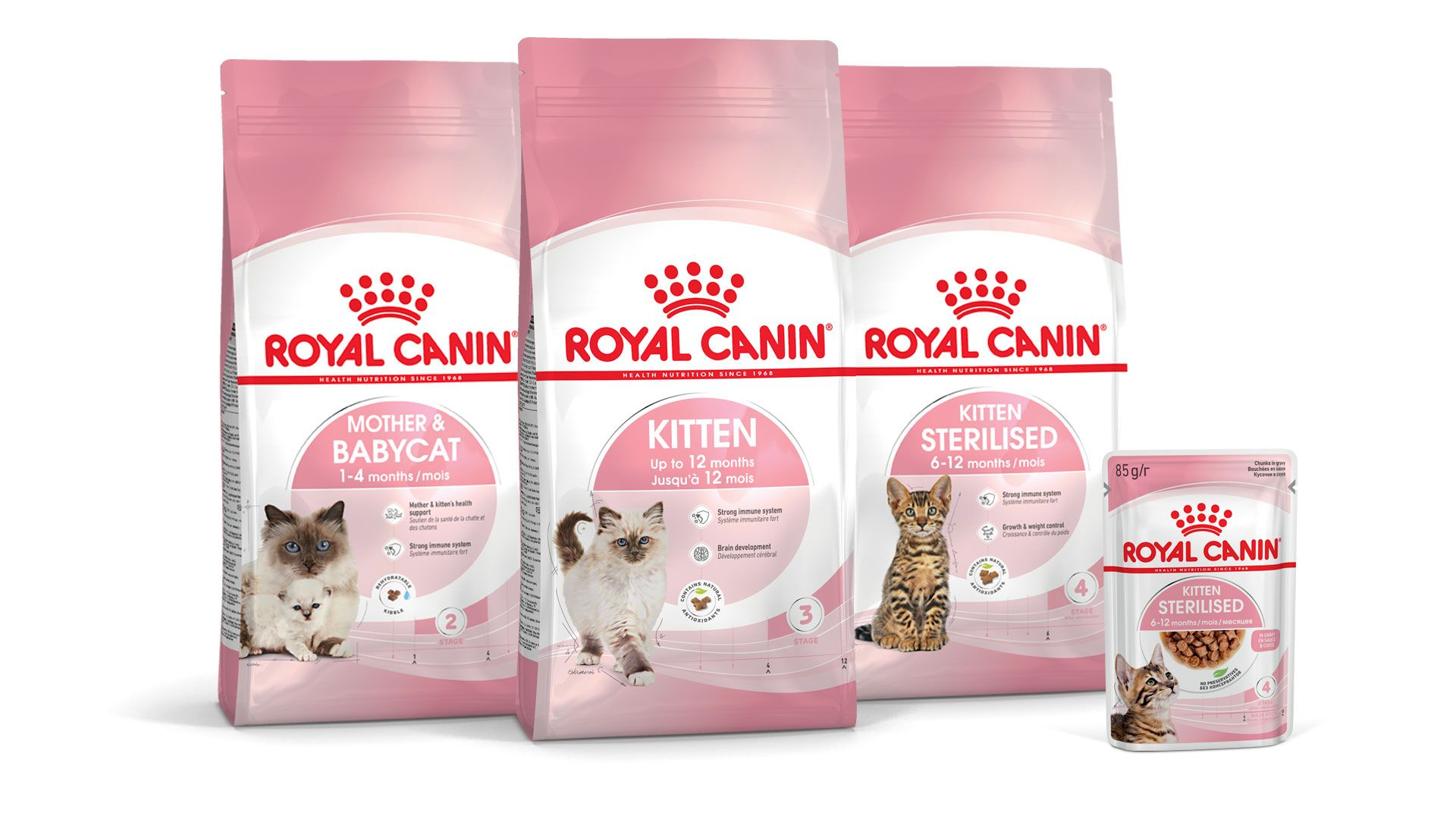
Our Kitten Growth Programme nutritional recommendations
Our products are designed to accompany your kitten’s growth, helping provide meaningful benefits thanks to specifically chosen nutrients for each stage of life.
The importance of switching your kitten to adult cat food
It’s normal to wonder how long you should feed your pet kitten food. Don’t forget that kittens undergo a period of rapid growth in the first few months of their lives. However, once your kitten matures into an adult cat, they need fewer calories per kg of body weight as their metabolism slows down and they tend to be less energetic.
One main difference between kitten and adult cat food is the calorie count. Continuing to feed kitten food to an adult cat may lead to obesity issues further down the line, due to the higher calorie count. Obesity also increases the risk of health-related issues for your cat, such as diabetes and arthritis.
With almost 60% of cats being considered overweight or obese, it is important not only to feed the age-appropriate food to your feline, but also to understand the correct portion size for kittens and cats.
Keep in mind that an adult cat’s nutritional needs will depend on several factors including their size, breed, activity levels and whether they’ve been sterilised. Your vet will be able to guide you on your cat’s dietary needs.
Let's find the most adapted food!
Answer a few questions about your cat to discover a personalised food recommendation
How to transition your kitten to adult cat food
A sudden switch in your kitten’s diet is to be avoided. When you make the transition from kitten to adult cat food, go gently so as to not disrupt their digestive system.
To put your mind at ease: if your kitten mistakenly eats some food from an older cat’s bowl, their health is not immediately at risk. But this is not behaviour that you want to encourage: a kitten eating adult cat food will simply not get the nutrients required for healthy growth.
Something to bear in mind when transitioning your kitten to adult food: managing their weight. Cats tend to eat small quantities several times a day. Whatever the rhythm you decide to go for, make sure you control the kitten's portion delivered, and eaten, over 24h.
Having said that, it really depends on the cat. There are three options to consider:
“Ad libitum” or self-service: when food is available 24 hours a day. This formula is suited to cats who are not likely to put on weight, who eat kibble and are able to self-regulate.
Fractionated feeding: limited in time and/or quantity. This method lets you control what the cat eats, but is not really suited to cats’ ethological needs, since they prefer grazing all day. A food dispensing toy helps solve this problem.
A combination of “ad libitum” food with kibble and wet food served at different times of the day. In this case, it is important to monitor calorie intake and to control the amount of food given carefully to avoid excess weight gain.
Five steps to properly switch your kitten’s food to adult food
You may need to make changes to your cat’s diet at various moments throughout their life. There is this first milestone, transitioning from kitten to adult food, but senior cats may also require a different diet to support their ageing body.
Whatever the reason, you should never change your kitten or cat’s feeding routine overnight. This may lead to your kitten or cat experiencing an upset stomach or loss of appetite.
Here are five essential steps that explain how to change your kitten or cat’s food gradually, for a positive experience.
Talk to your vet
When your kitten is maturing into an adult and needs a different diet, you should talk to your vet. They have your cat’s medical history, so can offer the best advice. They can also talk you through cat food brands and any changes to be made to the number of meals or portion sizes.
By making an appointment with the vet, you can also give your kitten a health check. This will confirm that the weight and growth of your kitten are as they should be. It will also help your vet to give the best advice concerning your cat’s new diet.
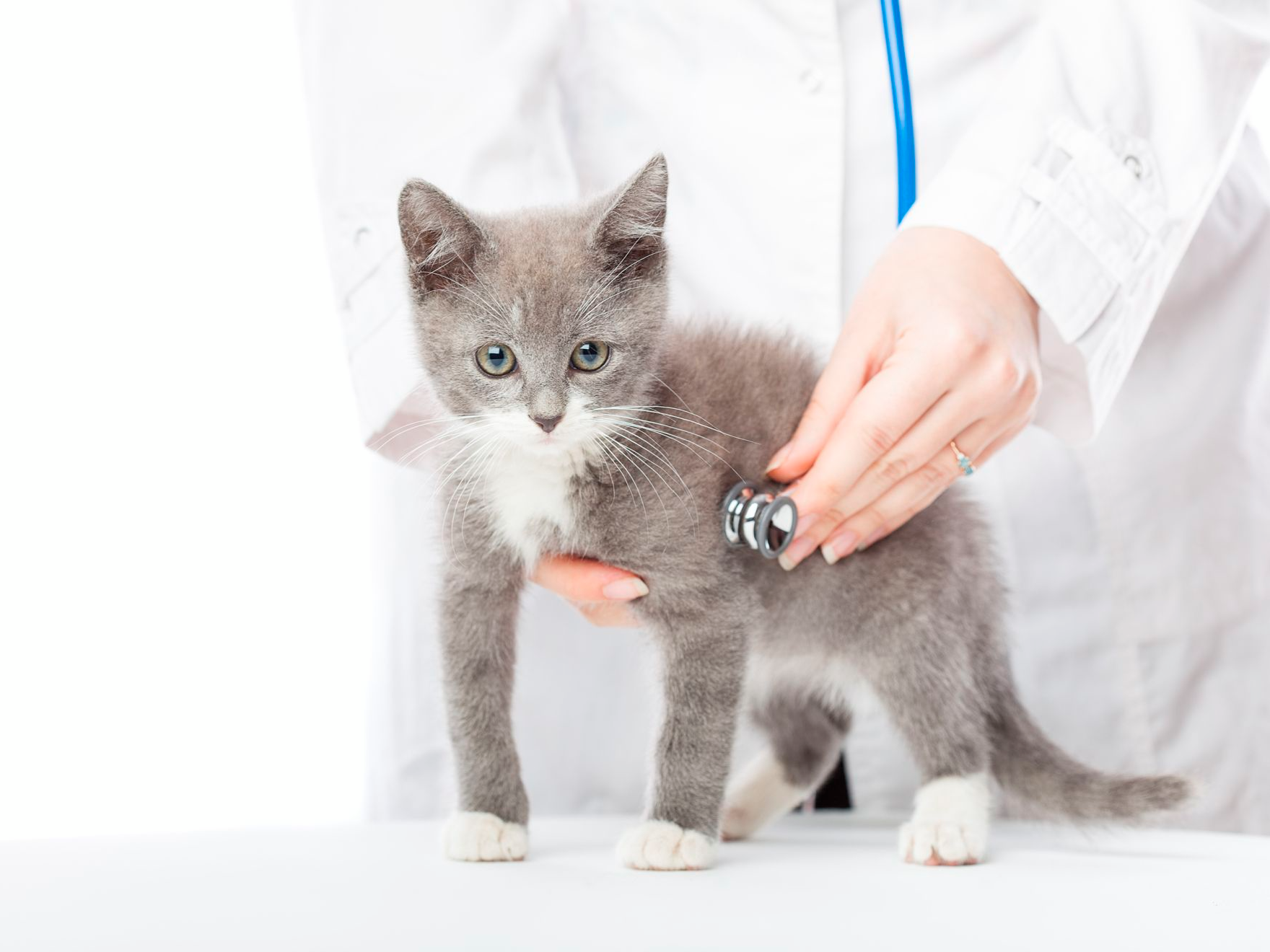
Age matters
It’s normal for many first-time cat owners to wonder how long their kitten should be on kitten food. Most kittens will need to transition to adult cat food around the 10-12 month mark.
One exception to this rule applies to larger cat breeds, such as the Maine Coon. They need a few more months to grow into their paws, so don’t hesitate to consult your vet if unsure about when to start feeding your kitten adult food.
It’s also a good idea to seek out your vet’s advice if you have adopted a kitten or cat. Your feline may be a mixed breed or there may be a question mark over their age. It’s good to be as accurate as possible when it comes to your cat’s diet.
Royal Canin offers a wide range of high-quality cat food options, which are adapted to cat size and breed, as well as nutrition-specific needs.
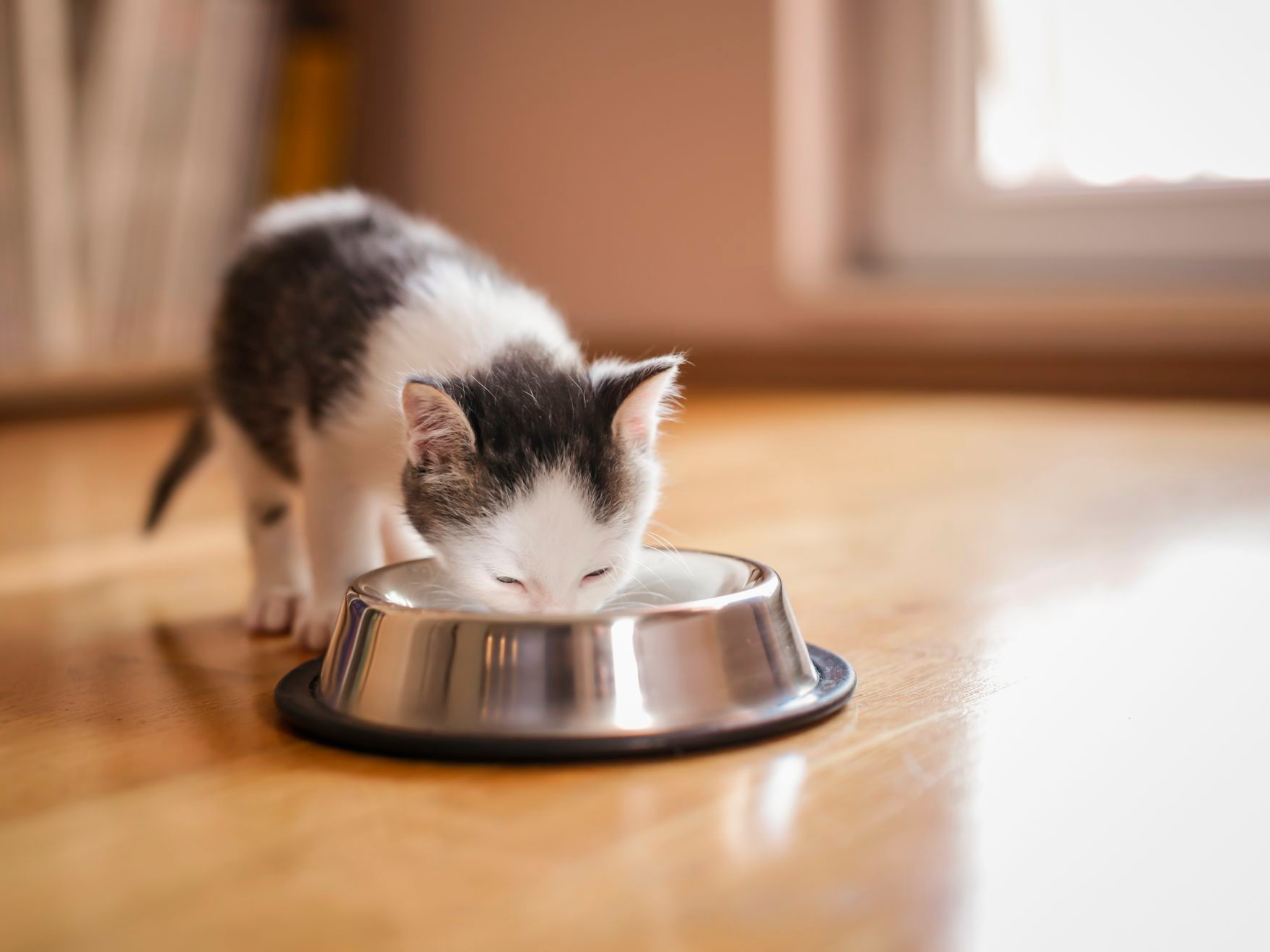
Take it slow
Your vet will have advised you to make a gradual transition from kitten to cat food, so please respect the rule. Also consider that your cat may need time to adapt to the difference in taste and texture of their new diet.
It is also important to go slow so as to not cause any upset to their digestive system.
Here is an ideal timeline of seven days, gradually adding more adult food into their bowl:
- Days one and two: a ratio of 75% kitten food and 25% adult food
- Days three and four: a ratio of 50% for each food
- Days five and six: a ratio of 25% kitten food and 75% adult food
- Day seven: 100% adult food
If you notice any gastrointestinal issues, such as vomiting or diarrhoea, extend the seven day plan to ten days.
If your kitten is resistant, find a solution to match their pace. For example, spend longer on a split food ratio (75/25) or introduce wet food into the mix, to help convince your kitten to go to their food bowl.
Keep a close eye on your kitten
Making the switch to adult food means you should observe your kitten and note any changes in their regular behaviour.
During this key period, it is also wise to track your kitten’s toilet habits and stool. It is highly likely that any changes are caused by the new food in their diet. But it could also suggest a sensitive stomach or a need to switch the food they’re eating.
Always check in with your vet if something doesn’t feel right.
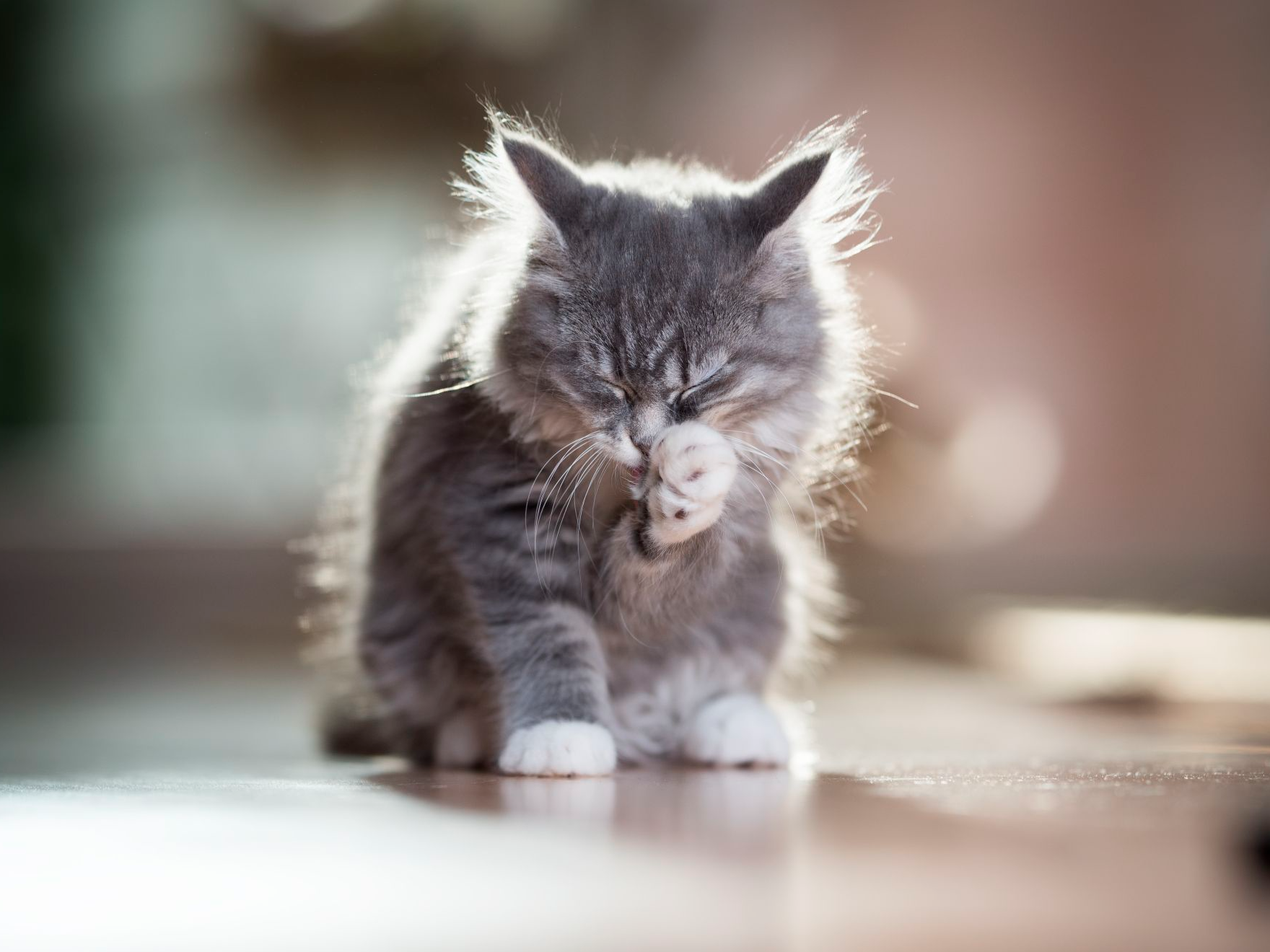
Test and learn
Your feline is unique. This means that preferences for mealtimes, food flavours, textures and portion size can differ from kitten to kitten. Some things to consider include:
You may have a kitten or cat that responds well to free-access feeding. For indoor or house cats however, portion controlled meals may be wiser, to help maintain their weight. In any case, the total amount you give to your cat should add up to their daily ration amount.
Different food textures: mixed feeding can be beneficial to cats of any age. Here’s why:
- A combination of wet and dry foods offers more variety. You have a growing kitten on your hands after all, so why not make feeding time an exciting experience for their nose and taste buds?
- A combination of wet and dry foods also offers the best of both nutritional worlds. Wet food will help make sure that your kitten stays hydrated as it ups their water consumption. Dry food plays a role in helping to keep your kitten’s teeth clean.
- If you happen to have a fussy kitten on your hands, mixed feeding can help with convincing them to eat what they need at mealtimes.

It is important to stay calm with your kitten during this transition period. The maturing period is a key moment for them and one that may feel a bit too much at times.
Any toilet accidents or vomit due to these changes in their diet should be calmly cleaned up. Progress can be acknowledged with positive reinforcement.
By working together, you can both have a smooth experience, which is not to say everything will be pawfect. Keep your expectations realistic and use these five simple steps to guide you when changing your kitten’s food routine.
Related articles
Like & share this page
